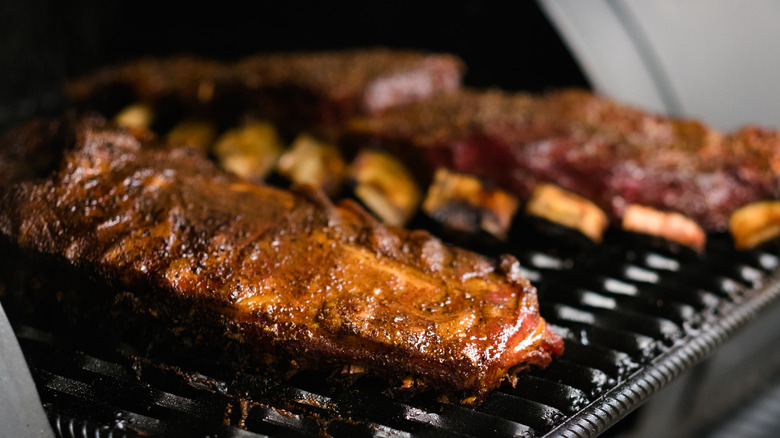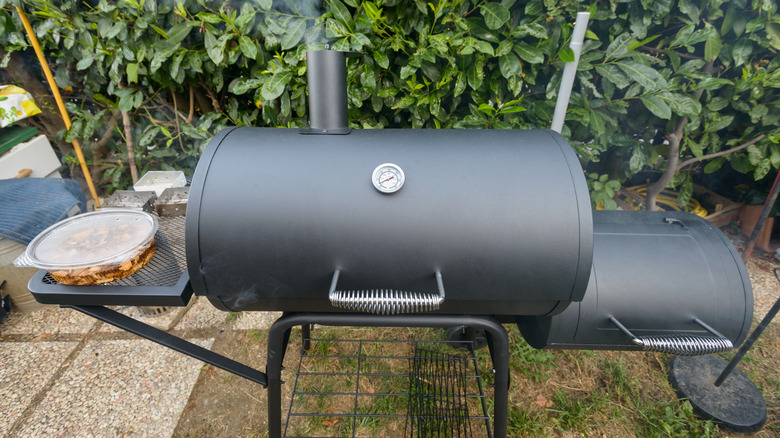What Happens If You Over-Smoke Beef Ribs And How To Prevent It
It takes one barbecue party to ruin your meat-smoking reputation, and among the culprits that can lead to its demise is over-smoking your beef ribs. Unlike burning, over-smoking meat leaves room to salvage it but can have you wondering if it is better to toss out the rack instead. With precise pitmaster skills and the help of our tips for cooking beef ribs, you won't have to face that dilemma and can prevent it completely by watching out for these smoke signals.
When you over-smoke beef, creosote builds on its surface. Creosote is a black, oily carbon residue that forms as a result of smoke that doesn't get a chance to combust so, instead, it condenses and forms a thick layer on the beef's exterior. Over-smoking, in this sense, is a heavy dose of smoke infusing meat due to incomplete combustion. But since creosote is black like bark, you might not be able to tell the two apart. However, you will identify creosote by the pungent and bitter flavors it imparts. Thankfully, you can cut off the black bits of creosote from your beef ribs, but it might not do much to save the meat's flavor.
On the other hand, over-smoking also happens when you smoke your beef ribs for too long — even without creosote forming. Smoking them for longer than necessary turns out dry and tough beef ribs lacking that desired juiciness you only find in perfectly smoked ribs. But not to worry — you can repurpose over-smoked beef ribs as a filling for these succulent beef rib tacos.
How to get perfectly smoked beef ribs
If you've never paid attention to the array of smoke colors that exist, now's a good time to start. The colors of smoke indicate whether your beef ribs will over-smoke, with white as a sign of dead, dirty smoke. It's an ash-filled cloud that imparts a sour taste to meat, and if you see it, your fire is probably burning at too low a temperature.
To avoid white or dirty smoke, control the temperature properly and maintain it between 225 and 275 degrees Fahrenheit. Open the exhaust vents so that your fire can breathe and directly impact your smoker by increasing the flame's temperature. Once you notice a thin blue smoke forming, you're well on your way to attaining perfectly smoked beef ribs. Another preventative measure is to use the right type of wood such as oak and hickory, which are ideal since they don't overpower beef's flavor with an overly smoky essence.
It might sound obvious, but to prevent over-smoking beef ribs, you also have to create less smoke. The easiest way to do this is to use less wood. No matter how tempted you may be to fortify your fire with more wood and help your beef ribs cook quicker, avoid doing so — more wood only leads to more smoke and thereby creosote forming. After all, you are the chief pitmaster to your beef ribs, so practice patience as the ultimate preventative measure to get perfectly smoked beef ribs.

